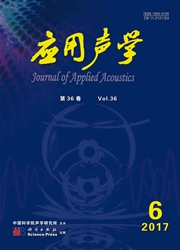

 中文摘要:
中文摘要:
基于高速列车减振降噪需求,本文应用Biot提出的多孔弹性介质声传播理论,采用传递矩阵法理论推导了典型分层结构的隔声量计算公式,给出了空气层与多孔材料对分层复合结构隔声特性的影响。将传递矩阵与遗传算法相结合,对特定中低频段内的复合结构隔声特性进行了优化。研究结果表明:空气层和多孔材料有助于分层复合结构隔声量的提高,特别是空气层对低频隔声有很好的促进作用,另外空气层与多孔材料的分配情况也影响着隔声效果。含有空气层的复合结构在提高隔声量的同时降低了结构的总体重量,实现了高速列车隔声材料低能耗和轻量化的设计目标。
 英文摘要:
英文摘要:
Based on the noise reduction requirement of high-speed train,the Biot theory of sound propagation in elastic porous medium and the method of transfer matrix were used to derive the transmission loss of typical layered-structure with air layers and porous materials. The sound insulation property of the composite structure had been optimized under the specific mid and low frequency band by numerical calculations using genetic algorithm and transfer matrix. The results indicate that the air layer and porous materials can improve the sound insulation property of the composite structure,especially the air layer which plays an important role on the sound insulation of low frequency part. In addition,the distribution of the air layer and porous materials also has an important impact on the sound insulation. The composite structure with an air layer has an advantage on the reduction of mass and it achieves the goal of low energy consumption and lightening design of high-speed train.
 同期刊论文项目
同期刊论文项目
 同项目期刊论文
同项目期刊论文
 期刊信息
期刊信息
